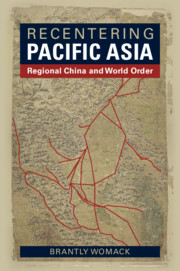Book contents
- Recentering Pacific Asia
- Recentering Pacific Asia
- Copyright page
- Contents
- Figures
- Table
- Author and Commentators
- Acknowledgements
- Note on the Cover Map
- Introduction
- 1 Continuities in China’s Pacific Asian Centrality
- 2 Thin Connectivity
- Commentary
- 3 Sharp Connectivity
- Commentary
- 4 Thick Connectivity
- Commentary
- 5 China, Pacific Asia, and Reconfiguring a Multinodal World
- Commentary
- 6 Global Power Rivalry, Pacific Asia, and World Order
- Bibliography
- Index
- References
Bibliography
Published online by Cambridge University Press: 03 August 2023
- Recentering Pacific Asia
- Recentering Pacific Asia
- Copyright page
- Contents
- Figures
- Table
- Author and Commentators
- Acknowledgements
- Note on the Cover Map
- Introduction
- 1 Continuities in China’s Pacific Asian Centrality
- 2 Thin Connectivity
- Commentary
- 3 Sharp Connectivity
- Commentary
- 4 Thick Connectivity
- Commentary
- 5 China, Pacific Asia, and Reconfiguring a Multinodal World
- Commentary
- 6 Global Power Rivalry, Pacific Asia, and World Order
- Bibliography
- Index
- References
Summary

- Type
- Chapter
- Information
- Recentering Pacific AsiaRegional China and World Order, pp. 233 - 249Publisher: Cambridge University PressPrint publication year: 2023

